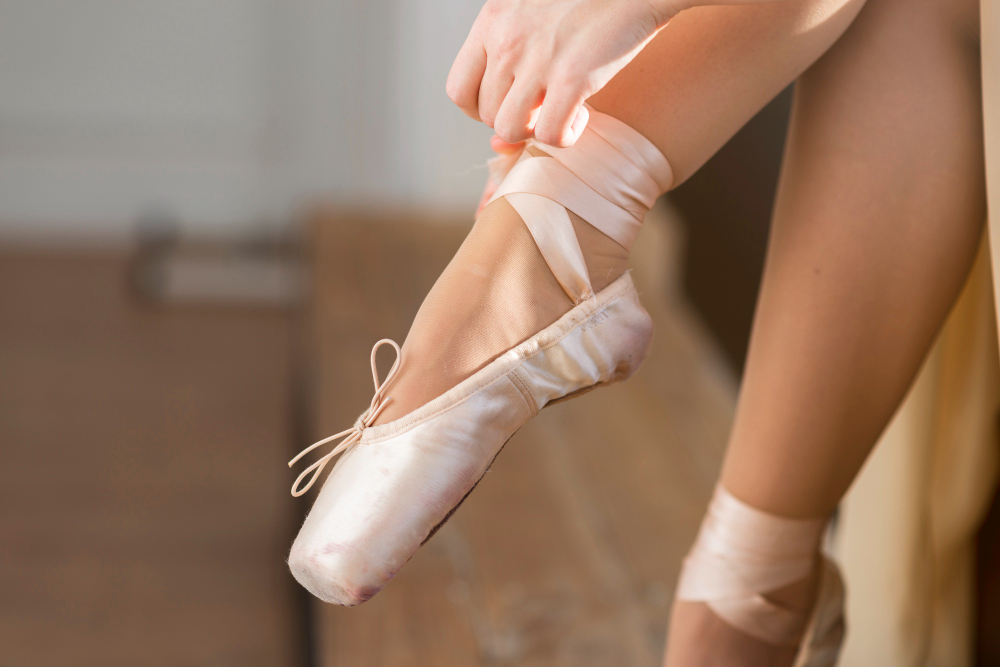Mastering the Art of Pointe Shoes: A Guide for Ballet Aficionados

Entering the world of ballet is like stepping into a realm where grace, discipline, and artistry converge. For dancers aspiring to reach the pinnacle of ballet—dancing en pointe—the journey begins with a pair of pointe shoes. These iconic symbols of ballet embody the beauty and challenges of the dance form. However, before pointe shoes can elevate a dancer's performance, they require a careful and personalized breaking-in process. For ballet enthusiasts in Apopka, FL, understanding this process is the first step towards mastering ballet's most demanding technique.
The Importance of Properly Broken-In Pointe Shoes
Pointe shoes are designed to support a ballet dancer's feet while enabling them to dance on the tips of their toes. A well-fitted and properly broken-in pair of pointe shoes can make a significant difference in a dancer’s performance, comfort, and foot health. Conversely, poorly prepared shoes can lead to discomfort, injury, and hindered performance. Thus, breaking in pointe shoes is not just a ritual but a necessity for every ballet dancer.
Understanding the Break-In Process
The break-in process is highly individualized, with each dancer having their own methods and preferences. However, several key steps are universally acknowledged to prepare pointe shoes for the demands of ballet performance.
1. Softening the Box
The box of the shoe, made of densely packed layers of fabric, glue, and paper, needs to be softened to conform to the shape of the foot. This can be achieved through gentle manipulation with the hands, focusing on the areas where the toes and the ball of the foot exert the most pressure. Some dancers also use a small amount of water or rubbing alcohol to soften these areas, but caution is advised to avoid damaging the shoes.
2. Working the Shank
The shank, which provides support to the arch, needs to be flexible enough to allow for a full range of motion. Dancers often bend and flex the shank gently with their hands to adjust its stiffness. It's important to tailor this step to your own foot’s strength and flexibility—too soft, and you lose support; too stiff, and the shoe hinders movement.
3. Molding the Shoe
Wearing the shoes at home can help mold them to the contours of your feet. Simple exercises, such as rising to demi-pointe and performing small pliés, can aid this process. However, avoid wearing the shoes too much outside the studio, as premature wear can reduce their lifespan.
4. Customization and Accessories
Many dancers use toe pads, lambswool, or other protective materials inside their pointe shoes for added comfort. Additionally, sewing on elastic and ribbons not only secures the shoes to the feet but also provides further customization to fit the dancer's ankles and arches optimally.
Tips from the Experts at 3D Motion Dance Center
At 3D Motion Dance Center, our experienced instructors emphasize the importance of patience and attentiveness in the break-in process. They recommend starting slowly, gradually increasing wear time to allow the body to adapt to the demands of dancing en pointe. Furthermore, they advocate for a proactive approach to foot care, including strengthening exercises and proper hygiene, to support a dancer's transition to pointe work.
Join Our Ballet Classes in Apopka, FL
For those inspired to explore the beautiful world of ballet, whether beginner or advanced, 3D Motion Dance Center offers a comprehensive ballet program in Apopka, FL. Our classes focus not only on technique and performance but also on the critical aspects of dancewear preparation, including pointe shoe selection and break-in techniques.
Conclusion
Breaking in pointe shoes is an essential skill for any ballet dancer, blending tradition with personal preference to create the perfect tool for artistic expression. Through understanding and patience, dancers can ensure their pointe shoes serve as extensions of their bodies, enabling them to perform with grace and precision. We invite you to join our community at 3D Motion Dance Center, where we nurture talent and passion for ballet in Apopka, FL. If you're looking for ballet classes in Apopka, FL, sign up for a free trial class today and take the first step towards mastering the art of ballet in your perfectly broken-in pointe shoes.